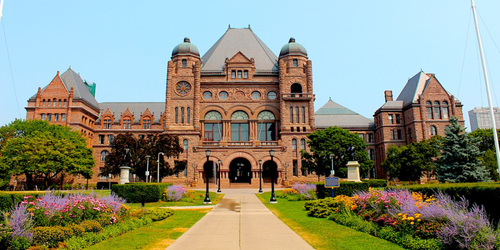October 7, 2016
Mandatory energy & water disclosure to start in 2017

As Ontario is starting to tackle climate change in a significant way, it needs to address emissions from all industry sectors. For real estate owners and managers, the most significant regulation is the Energy Statute Law Amendment Act, which became law on June 9, 2016.
The act requires Ontario properties to report annual energy and water consumption to the Ministry of Energy using the ENERGY STAR Portfolio Manager. This legislation builds on similar obligations present in EU and the US, where sometimes buildings are ranked in league tables to inform the public.
The act covers actions by properties, utilities and regulators
Through amendments to Ontario’s Green Energy Act (2015), the Energy Statute Law Amendment Act establishes the province’s authority to make new rules:
- Properties must disclose whole building energy and water consumption and ratings
- Utility distributors are required to provide property owners with utility information
- The Ministry of Energy has the authority to publicly disclose certain submitted information
It will provide full transparency of energy and water use to landlord and tenant
The rules, also known as the Energy and Water Reporting and Benchmarking (EWRB) regulatory requirement, is likely to be approved sometime this year and should be viewed as a performance management tool. It allows beginners to see opportunities for efficiency improvements and cost savings and encourages a more experienced company to outperform benchmarks. The Ministry of Energy will likely publish the information, allowing companies and properties to benchmark their performance against their peers. Disclosure of building data will also allow the market to price in resource efficiency in purchasing, leasing and lending decisions.
- It can help property managers:
- Manage energy and water costs
- Obtain a full picture of the energy, water and greenhouse gas emissions footprint of a building
- Respond to tenant sustainability information demands
- Identify energy and water-saving opportunities
- Set goals by providing a relevant performance benchmark
- Drive results by comparing similar facilities across the province and learn from the best
- Correlate energy and water efficiency investments with returns over time
- It will also help property owners:
- Improve sustainability information availability
- Inform investment decisions and allocate capital to efficiency upgrades
- Protect asset value by having increased knowledge about ill-performing assets
- Evaluate sustainability performance of current and potential investments

Start now by using free ENERGY STAR
Since the deadline for the first reporting period is fast approaching, we encourage you to sign up for the free ENERGY STAR Portfolio Manager and begin to populate the system with energy, water and property information to get into the habit of doing so. Prioritize buildings larger than 250,000 square feet (located in Ontario).
Take advantage of the regulation as an opportunity to use the Portfolio Manager for all of your properties as there are numerous benefits. The Portfolio Manager is widely used to:
- Track portfolio energy and water data and costs
- Calculate greenhouse gas emissions
- Generate property ENERGY STAR rating and ranking
- Assist green building certification
- Sync and consolidate data with other sustainability information systems
Detailed regulation specifies that most building types are mandated to report, but verification not yet required
A proposal notice for the EWRB requirement spells out what is involved in complying with the Energy Law Amendment Statute Act.
| Content | Description |
| Building types |
|
| Reporting system |
|
| Data verification |
|
| Annual disclosure |
|
| Temporary exemptions |
|
| Exemptions |
|
Regulation timeline is phased over 3 years, starting next summer for largest buildings
Furthermore, the Ministry of Energy proposes a phase-in of the EWRB over a three-year period.
| Year | Period | Deadline to report | Property size threshold |
| Year 1 | Jan 2016 – Dec 2016 | July 1, 2017 | >250,000 sf |
| Year 2 | Jan 2017 – Dec 2017 | July 1, 2018 | >100,000 sf |
| Year 3 | Jan 2018 – Dec 2018 | July 1, 2019 | >50,000 sf |